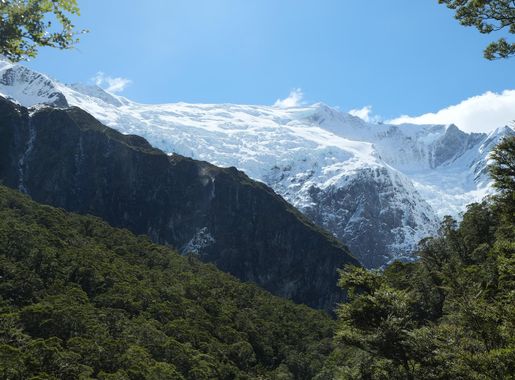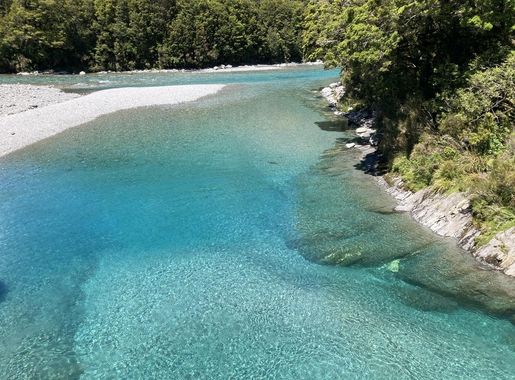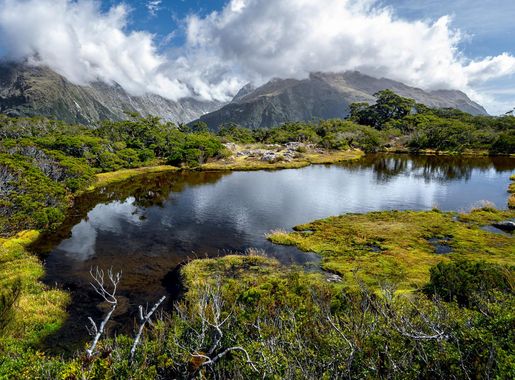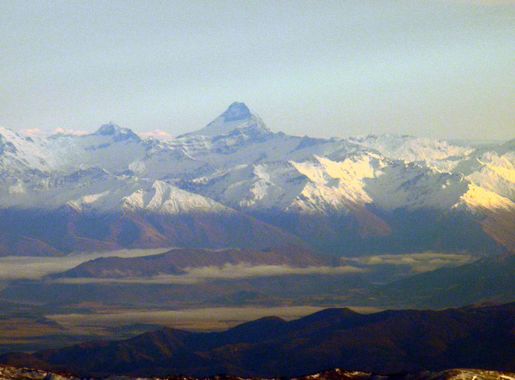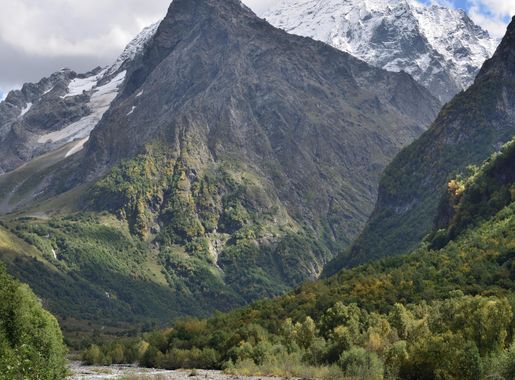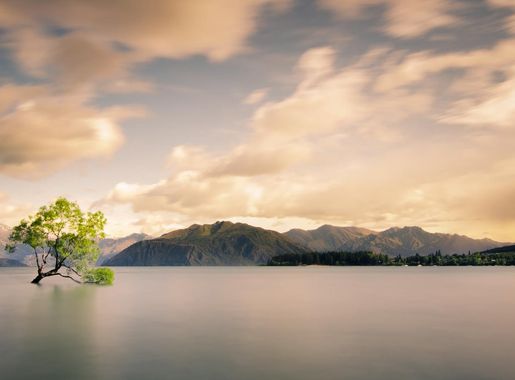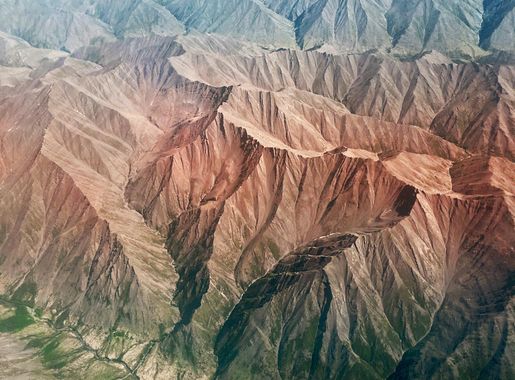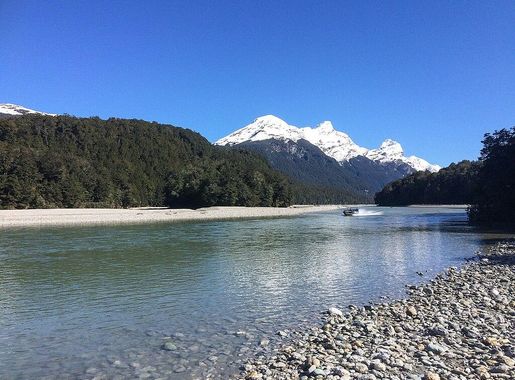
Mount Aspiring National Park: New Zealand's Natural Gem
Discover the breathtaking beauty and diverse landscapes of Mount Aspiring National Park, a true jewel in New Zealand's South Island, perfect for adventure and nature enthusiasts.
Mount Aspiring National Park, located in the South Island of New Zealand, is a haven for nature lovers and adventure seekers alike. Encompassing over 3,500 square kilometers, the park is a part of the Te Wahipounamu World Heritage Area and boasts some of the country's most stunning landscapes. From towering mountains and expansive valleys to pristine rivers and ancient beech forests, the park offers a diverse range of natural beauty. Visitors can explore a variety of hiking trails, ranging from short walks to challenging multi-day treks. The famous Routeburn Track, one of New Zealand's Great Walks, partially traverses the park and offers breathtaking views of alpine scenery. For those interested in mountaineering, Mount Aspiring itself, often referred to as 'the Matterhorn of the South', provides a thrilling climb. Wildlife enthusiasts will enjoy the chance to spot native birds like the kea, a playful mountain parrot, and the rare whio, or blue duck, often seen in the park's rivers. The park also offers opportunities for kayaking, jet boating, and fishing in its clear, glacial-fed waters. Whether you're seeking adventure or tranquility, Mount Aspiring National Park is a must-visit destination that captures the essence of New Zealand's natural wonders.
Local tips in Mount Aspiring National Park
- Check the weather forecast beforehand, as conditions can change rapidly in the mountains.
- Pack layers of clothing to stay comfortable in varying temperatures.
- Bring insect repellent to protect against sandflies, especially near rivers and lakes.
- Carry a map and compass, and ensure you are well-prepared if venturing on longer hikes.
- Book accommodations and guided tours in advance, particularly during peak season.
- Respect the natural environment by following Leave No Trace principles.
Mount Aspiring National Park: New Zealand's Natural Gem
Mount Aspiring National Park, located in the South Island of New Zealand, is a haven for nature lovers and adventure seekers alike. Encompassing over 3,500 square kilometers, the park is a part of the Te Wahipounamu World Heritage Area and boasts some of the country's most stunning landscapes. From towering mountains and expansive valleys to pristine rivers and ancient beech forests, the park offers a diverse range of natural beauty. Visitors can explore a variety of hiking trails, ranging from short walks to challenging multi-day treks. The famous Routeburn Track, one of New Zealand's Great Walks, partially traverses the park and offers breathtaking views of alpine scenery. For those interested in mountaineering, Mount Aspiring itself, often referred to as 'the Matterhorn of the South', provides a thrilling climb. Wildlife enthusiasts will enjoy the chance to spot native birds like the kea, a playful mountain parrot, and the rare whio, or blue duck, often seen in the park's rivers. The park also offers opportunities for kayaking, jet boating, and fishing in its clear, glacial-fed waters. Whether you're seeking adventure or tranquility, Mount Aspiring National Park is a must-visit destination that captures the essence of New Zealand's natural wonders.
When is the best time to go to Mount Aspiring National Park?
Iconic landmarks you can’t miss
#ThatWanakaTree
Discover the breathtaking beauty of #ThatWanakaTree, a must-see natural landmark on the shores of Lake Wanaka, New Zealand.
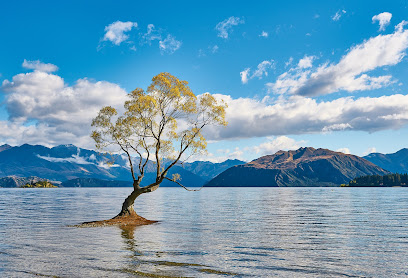
Fantail Falls
Experience the enchanting beauty of Fantail Falls in Mount Aspiring National Park, a must-visit scenic spot for nature lovers in New Zealand.
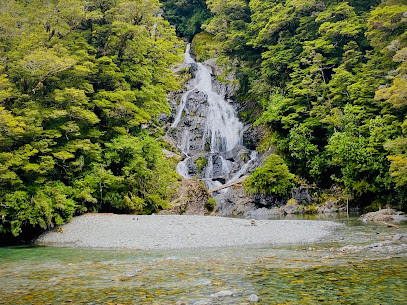
Lake Hawea Lookout
Experience the stunning vistas of Lake Hawea Lookout, a serene gem in New Zealand, perfect for photography and nature lovers.

Blue Pools
Explore the stunning Blue Pools in Otago, where crystal-clear waters meet breathtaking landscapes, a true paradise for nature lovers.

Wildwire Wanaka
Experience the thrill of a lifetime at Wildwire Wanaka, where breathtaking landscapes meet exhilarating outdoor adventures in New Zealand.
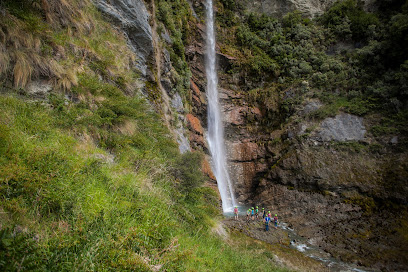
Roaring Billy Falls
Experience the natural beauty of Roaring Billy Falls, a stunning waterfall in Mt Aspiring National Park, perfect for adventure seekers and nature lovers.
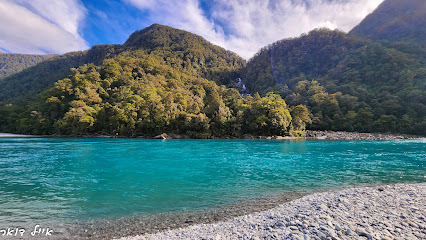
Diamond Lake Conservation Area
Explore the breathtaking Diamond Lake Conservation Area, a nature preserve in New Zealand offering stunning landscapes and tranquil adventures.
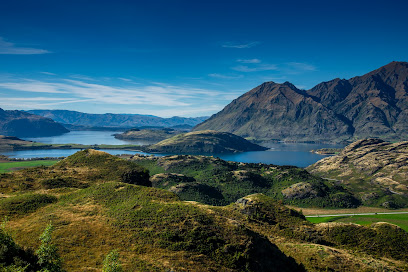
Tititea/Mount Aspiring National Park Visitor Centre
Discover the gateway to adventure at the Tititea/Mount Aspiring National Park Visitor Centre in Wānaka, where stunning landscapes await.
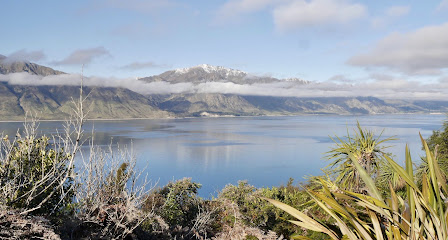
Gates of Haast
Experience the breathtaking beauty of the Gates of Haast, a stunning waterfall in New Zealand's Mount Aspiring National Park, perfect for nature lovers and adventurers.
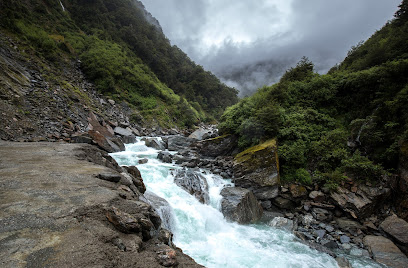
Glendhu Bay Lookout
Discover stunning vistas at Glendhu Bay Lookout in Mount Aspiring National Park, a serene escape into New Zealand's natural splendor.
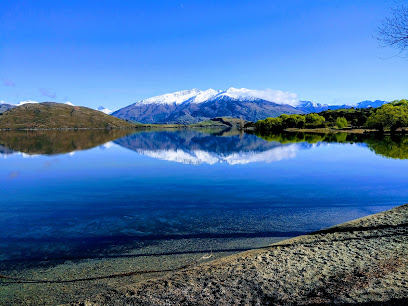
Routeburn Track Trailhead (Routeburn Shelter)
Discover the breathtaking beauty of Fiordland at the Routeburn Track Trailhead, where nature's wonders await every adventurer.
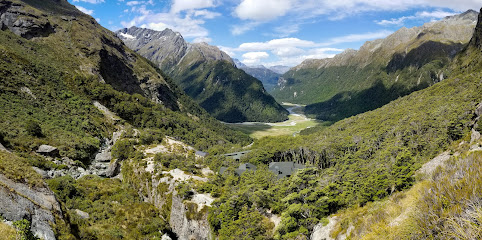
Routeburn Falls Hut
Discover the tranquility of Routeburn Falls Hut in Mount Aspiring National Park, your gateway to New Zealand's stunning landscapes and hiking adventures.
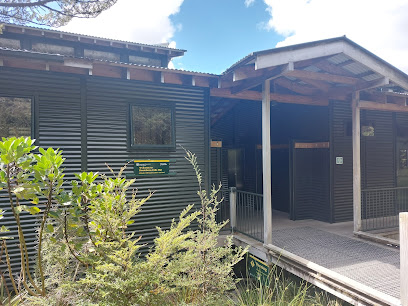
Routeburn Flats Hut
Experience the natural beauty and tranquility of Routeburn Flats Hut, a perfect retreat for hikers in the breathtaking Mount Aspiring National Park.
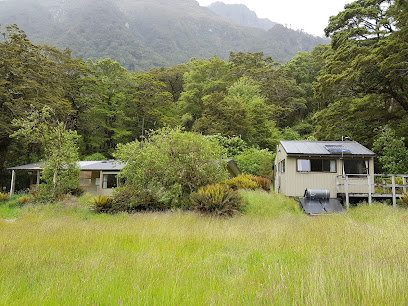
Rob Roy Glacier Track
Experience the breathtaking beauty of the Rob Roy Glacier Track in Mount Aspiring National Park, a must-visit destination for hiking enthusiasts and nature lovers.

Routeburn Nature Walk
Explore the stunning landscapes of the Routeburn Nature Walk, a premier hiking destination in New Zealand's Otago region, where nature and adventure await.
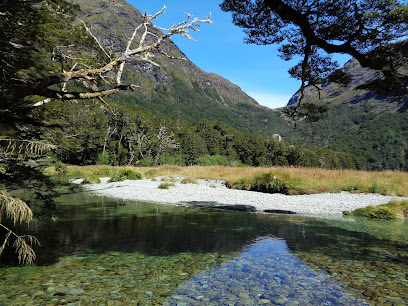
Unmissable attractions to see
Puzzling World
Experience the whimsical world of Puzzling World in Wānaka, New Zealand, where illusions and fun await at every turn.
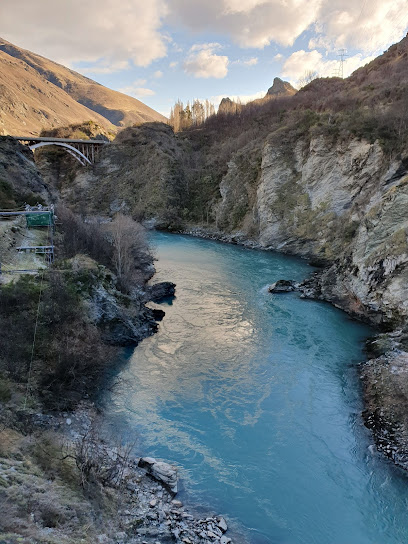
#ThatWanakaTree
#ThatWanakaTree: A breathtaking symbol of nature's beauty in Wānaka, offering stunning views and unforgettable photo opportunities along Roys Bay.
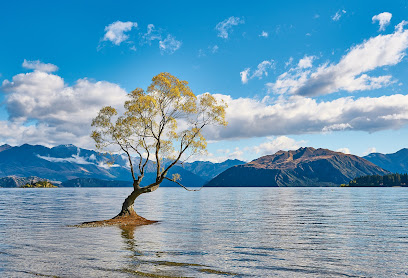
Wānaka Lavender Farm
Explore the vibrant lavender fields and enjoy delightful honey tastings at Wānaka Lavender Farm, a serene paradise in New Zealand's stunning landscapes.
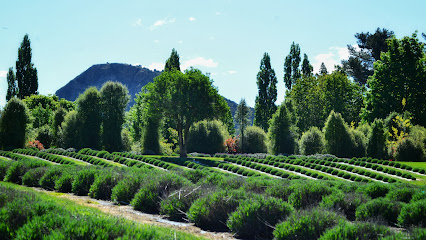
National Transport & Toy Museum
Discover a treasure trove of transport and toys at the National Transport & Toy Museum in Wānaka, a family-friendly attraction filled with nostalgia.
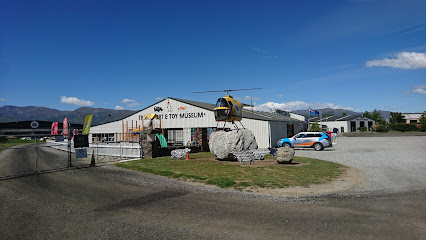
Lake Hawea Lookout
Discover the stunning panoramic views of Lake Hawea and the Southern Alps at Lake Hawea Lookout, a must-visit scenic spot in New Zealand.
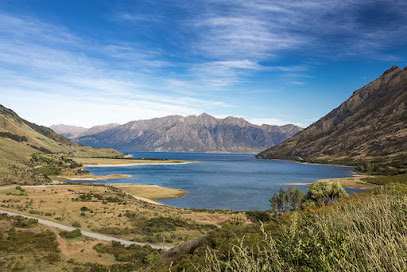
Roys Peak Lookout
Discover the breathtaking views from Roys Peak Lookout in Wanaka, a must-see destination for nature lovers and adventure seekers alike.
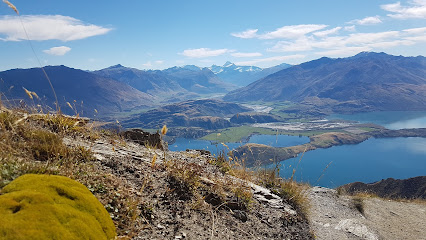
Crown Range Summit
Discover the stunning Crown Range Summit, offering breathtaking views and exhilarating adventures in the heart of New Zealand's South Island.
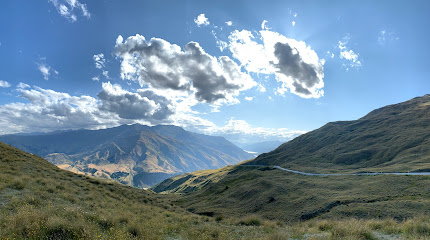
Treble Cone Ski Area
Discover the breathtaking slopes and stunning vistas at Treble Cone Ski Area, Wānaka's premier destination for skiing and snowboarding enthusiasts.
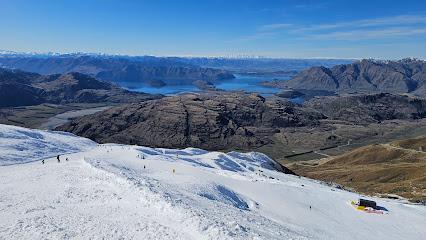
Wildwire Wanaka
Discover unparalleled adventure at Wildwire Wanaka - where rock climbing meets stunning natural beauty in New Zealand's breathtaking landscapes.
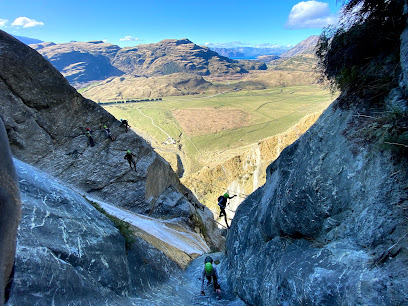
Roaring Billy Falls
Experience the breathtaking beauty of Roaring Billy Falls in Mt Aspiring National Park, a must-visit destination for nature lovers in New Zealand.
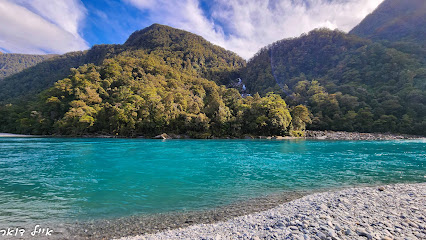
Diamond Lake Conservation Area
Experience the serene beauty and rich biodiversity of Diamond Lake Conservation Area near Wanaka, a must-visit for nature lovers and outdoor enthusiasts.
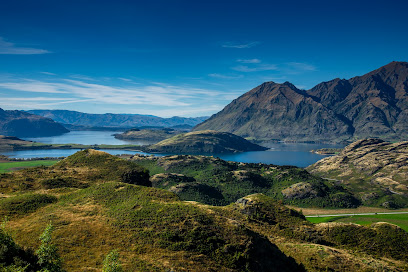
Mount Iron Track
Discover the breathtaking views and invigorating trails of Mount Iron Track in Wanaka, New Zealand, a must-visit for nature lovers and hikers.

Glendhu Bay Lookout
Discover the stunning vistas of Glendhu Bay Lookout in Mount Aspiring National Park, a paradise for nature lovers and photographers alike.
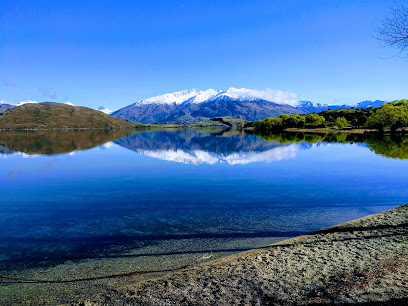
Wanaka Horse Trekking
Discover the breathtaking beauty of New Zealand's landscapes through unforgettable horse trekking adventures in Wanaka.
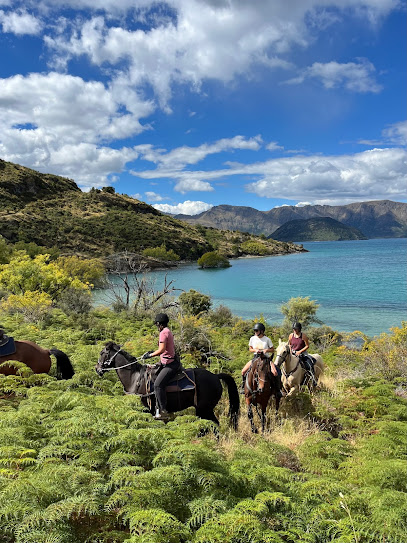
Aspiring Helicopters
Explore Wanaka's stunning landscapes from above with Aspiring Helicopters, offering unforgettable scenic flights and glacier landings.
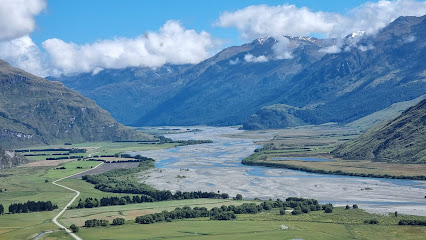
Essential places to dine
Big Fig Wanaka
Discover Big Fig Wanaka: A delightful dining experience featuring fresh local ingredients in a cozy atmosphere.
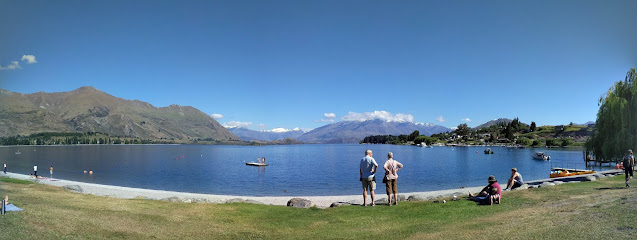
Francesca Wanaka
Experience authentic Italian flavors at Francesca Wanaka – where every meal is a celebration amidst stunning New Zealand landscapes.
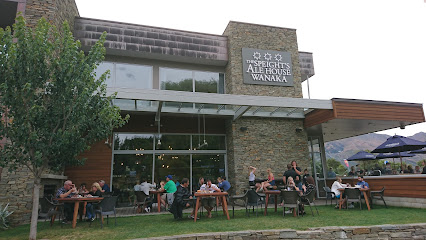
Speight's Ale House
Experience the essence of Wānaka at Speight's Ale House - where delicious food meets local craft beers in a stunning setting.
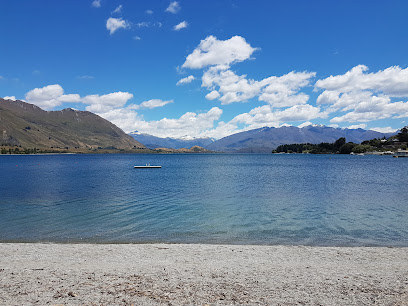
Bombay Palace Wanaka
Savor authentic Indian cuisine at Bombay Palace Wanaka – your gateway to flavorful dishes in a charming atmosphere.
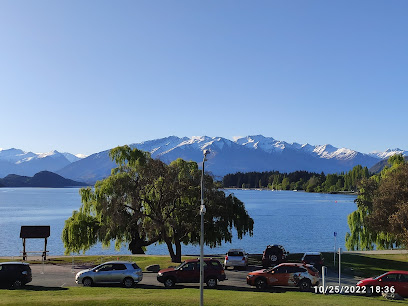
Relishes Cafe
Discover exquisite flavors and warm hospitality at Relishes Cafe in Wānaka - where every meal is a delightful experience.

Water Bar Wanaka
Discover Water Bar Wanaka - where delicious cuisine meets breathtaking views in an unforgettable dining experience.
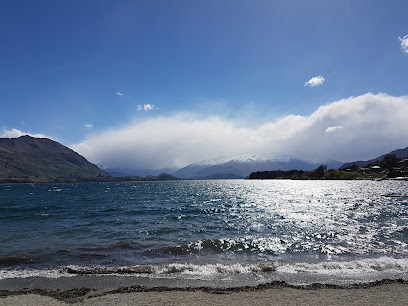
Kika
Experience exquisite dining at Kika in Wānaka - where local flavors meet culinary artistry in a warm atmosphere.
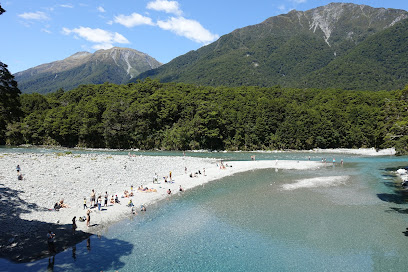
Trout Restaurant Cafe/Bar
Savor fresh local cuisine at Trout Restaurant Cafe/Bar in Wānaka - a culinary gem surrounded by breathtaking landscapes.
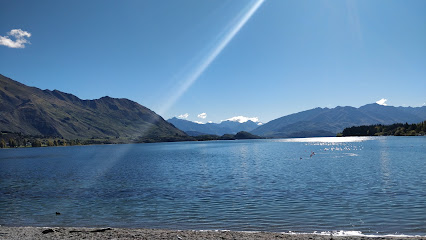
Tititea Steak House (formerly Wanaka Gourmet Kitchen)
Experience culinary excellence at Tititea Steak House in Wānaka – where premium steaks meet exquisite flavors in a warm ambiance.
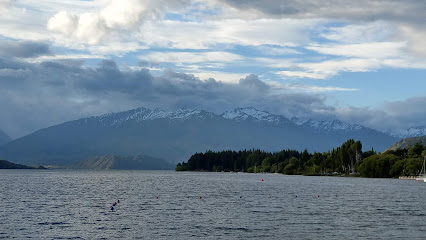
Federal Diner
Experience the best breakfast in Wānaka at Federal Diner – where local flavors meet warm hospitality.
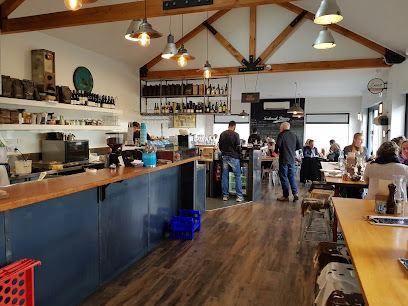
鼎點168(Gusto)
Discover Gusto in Wānaka: Where authentic Chinese cuisine meets stunning lakeside views.
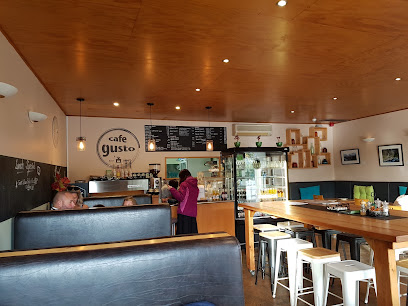
The Cow Pizza & Spaghetti House
Experience authentic Italian dining at The Cow Pizza & Spaghetti House in Wānaka – where every meal is made with love and fresh ingredients.
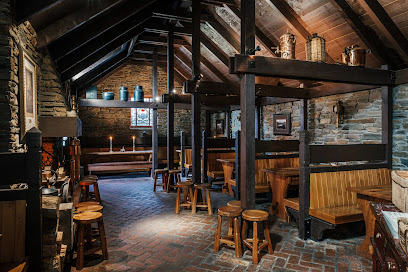
Muttonbird
Experience exquisite local cuisine at Muttonbird in Wānaka - where every dish tells a story of New Zealand's rich flavors.
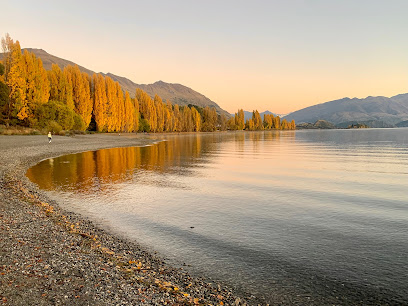
The Spice Room
Discover authentic Indian flavors at The Spice Room in Wānaka—an unforgettable culinary experience amidst stunning New Zealand landscapes.

Bistro Gentil
Experience exquisite French cuisine at Bistro Gentil in Wānaka, where every meal is a celebration of flavor and local ingredients.
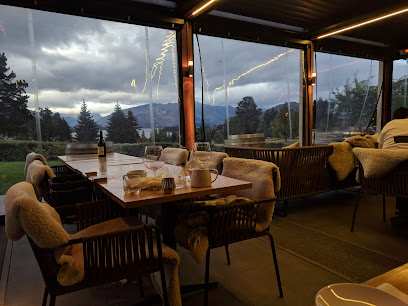
Markets, malls and hidden boutiques
Puzzling World
Discover the extraordinary at Puzzling World, Wānaka's premier amusement center filled with illusions and fun for all ages.

Base Streetwear
Discover stylish apparel and local flair at Base Streetwear, Wānaka's ultimate fashion destination for tourists seeking unique clothing.

Salvation Army Family Store Wānaka
Explore the Salvation Army Family Store in Wānaka for unique second-hand treasures while supporting a great cause.

DEVàL Boutique
Discover stylish clothing and local craftsmanship at DEVàL Boutique, a premier shopping destination in Wānaka, New Zealand.
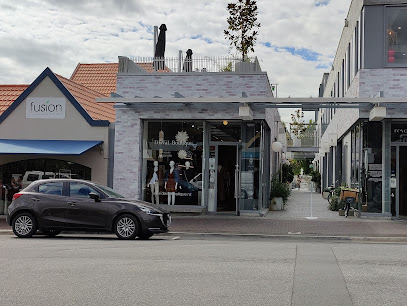
Wanaka Hospice Shop
Explore Wanaka Hospice Shop for unique second-hand fashion treasures while supporting local hospice services in the beautiful Wanaka region.

Revology Concept Store
Discover unique gifts, home goods, and delightful teas at Revology Concept Store in Wānaka, New Zealand - a perfect stop for every traveler.
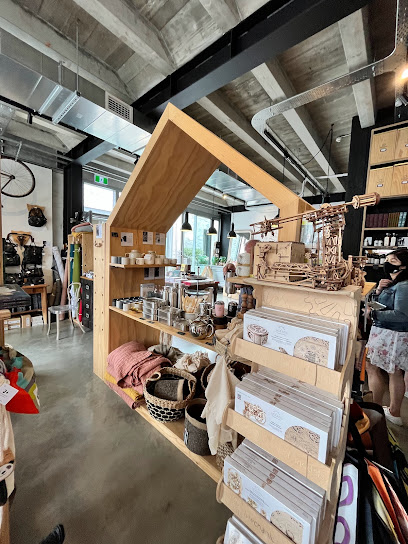
Aotea Gifts Queenstown
Discover unique souvenirs and local treasures at Aotea Gifts Queenstown, your ultimate shopping destination in the heart of New Zealand.
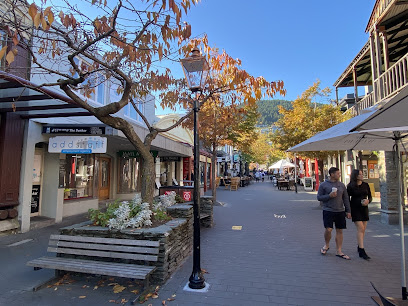
Wānaka Township
Explore the natural beauty and vibrant culture of Wānaka Township, New Zealand's hidden gem for adventure and relaxation.

The Outpost Queenstown
Explore The Outpost Queenstown for unique gifts and souvenirs that embody the essence of New Zealand's culture and craftsmanship.

Southern Wild
Discover outdoor adventure supplies at Southern Wild in Wānaka, where your journey into New Zealand's stunning landscapes begins.
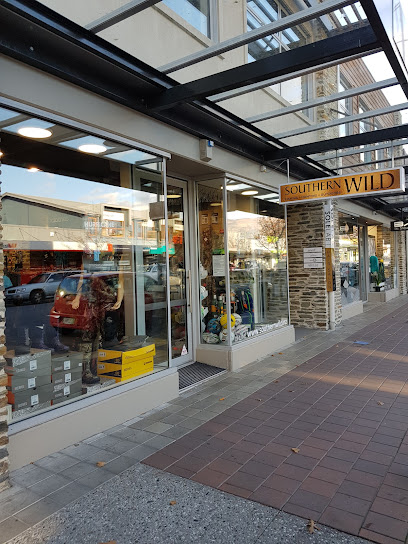
Wools of Wanaka
Explore Wools of Wanaka: a charming gift shop offering exquisite local crafts, quality yarns, and a welcoming atmosphere for knitting enthusiasts.
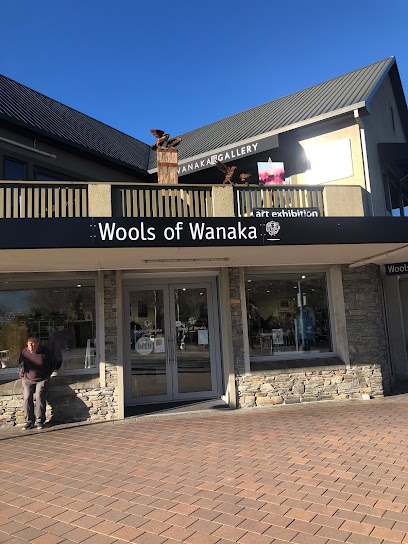
Thieving Kea
Explore unique fashion accessories at Thieving Kea in Wānaka, where creativity meets New Zealand's artistic spirit for an unforgettable shopping experience.

Flora Fauna
Discover unique souvenirs and local art at Flora Fauna, Queenstown's must-visit gift shop and art gallery celebrating New Zealand's creativity.

Wonder Room
Explore the artistic charm of Wānaka at Wonder Room, your go-to gift shop for unique handicrafts, jewelry, and authentic souvenirs.

Bella of Wanaka
Discover Bella of Wanaka, a premier women's clothing store offering stylish apparel and unique accessories in the heart of Wānaka, New Zealand.

Essential bars & hidden hideouts
Cardrona Hotel
Discover the historic Cardrona Hotel, a charming retreat in the stunning Cardrona Valley, offering a cozy bar, delicious dining, and comfortable accommodations.
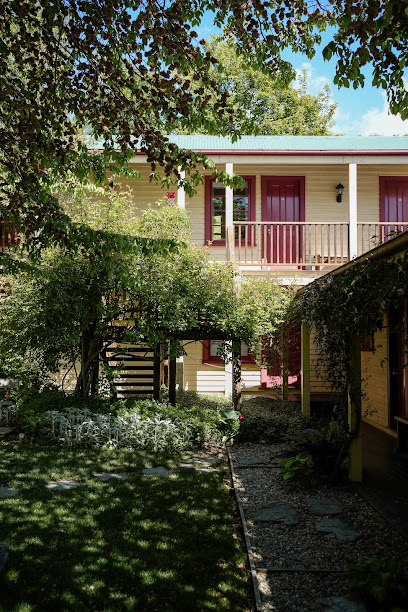
Big Fig Wanaka
Discover Big Fig Wanaka, a culinary hotspot offering delectable meals made from fresh, locally-sourced ingredients in a cozy atmosphere.

Speight's Ale House
Discover the heart of Wānaka at Speight's Ale House, where local craft beers meet delicious New Zealand cuisine in a vibrant gastropub setting.

Red Star Burger Bar
Experience the best gourmet burgers in Wānaka at Red Star Burger Bar, where local ingredients come together for a delightful dining experience.

Lake Bar
Experience the charm of Wānaka at Lake Bar, where stunning lake views meet delicious food and refreshing drinks in a relaxed atmosphere.
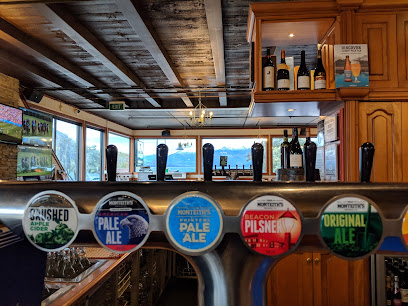
Federal Diner
Discover the delicious breakfast offerings at Federal Diner, Wānaka's favorite café for fresh local flavors and a cozy atmosphere.
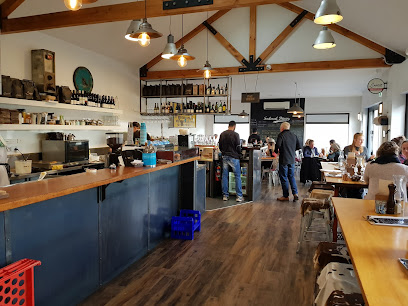
Perky's - Floating Bar Queenstown
Discover the charm of Perky's Floating Bar in Queenstown, where stunning lake views and refreshing drinks create the perfect getaway.
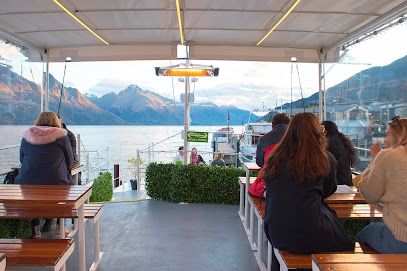
Cardrona Distillery
Experience the finest spirits and culinary delights in the stunning Cardrona Valley at Cardrona Distillery.
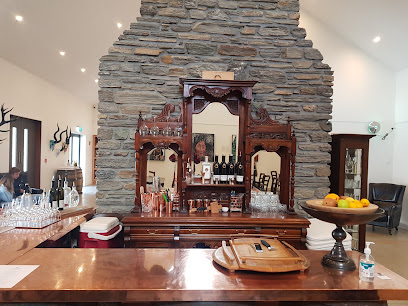
Wonderland Makarora Lodge
Discover cozy lodging, delightful dining, and outdoor adventure at Wonderland Makarora Lodge in New Zealand's stunning Southern Alps.
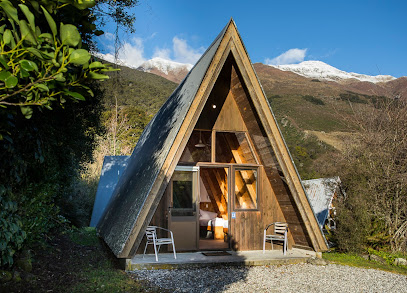
Wanaka Bullock Bar
Discover the lively Wanaka Bullock Bar, where great food, craft beverages, and sports unite in a vibrant setting against stunning alpine views.
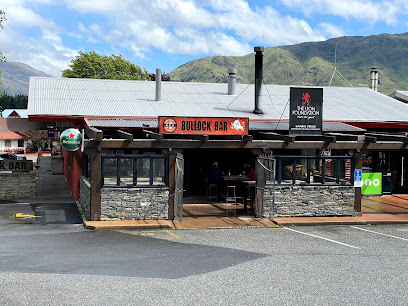
Paloma Taqueria
Discover the essence of Mexico in Wānaka with authentic flavors and vibrant dishes at Paloma Taqueria, a dining experience not to be missed.
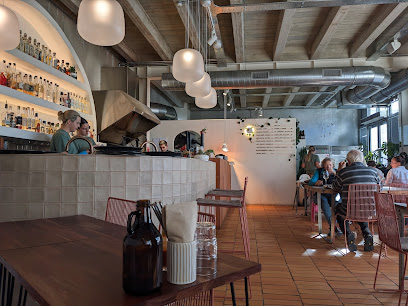
Routeburn Falls Hut
Experience the serene beauty of Routeburn Falls Hut, your perfect base for exploring Mount Aspiring National Park and the breathtaking Routeburn Track.
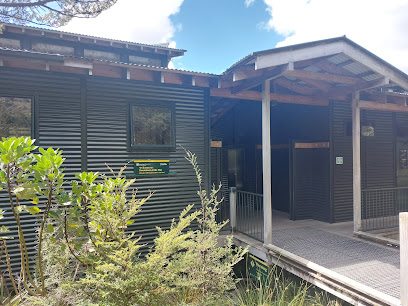
Kamino - Coffee Shop & Eatery
Discover Kamino in Wānaka: A delightful coffee shop and eatery serving local flavors and a cozy ambiance perfect for relaxation.
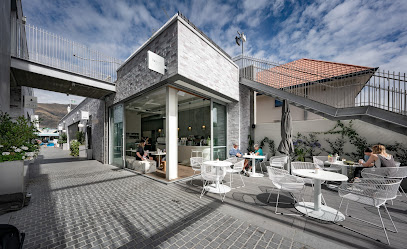
Woodys Sports Bar
Vibrant sports bar in Wānaka offering delicious food, refreshing drinks, and a lively atmosphere perfect for sports lovers and casual diners.

Tititea / Mount Aspiring
Discover the breathtaking beauty of Tititea / Mount Aspiring, a majestic peak in New Zealand's Southern Alps, perfect for adventure and tranquility.
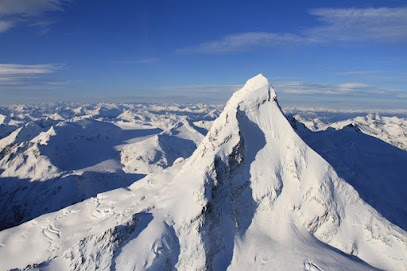
Local Phrases about Mount Aspiring National Park
-
- HelloKia ora
[kee-ah or-ah] - GoodbyeHaere rā
[high-reh rah] - YesĀe
[eye] - NoKāo
[kah-oh] - Please/You're welcomeMōrena
[moh-reh-nah] - Thank youKia ora
[kee-ah or-ah] - Excuse me/SorryWhakarongo mai
[fah-kah-rohn-goh my] - How are you?Kei te pēhea koe?
[keh-ee teh pay-heh-ah koh-eh] - Fine. And you?Kei te pai. Ā koe?
[keh-ee teh pie. eye koh-eh] - Do you speak English?Kōrerotia koe i te reo Pākehā?
[koh-reh-roh-tee-ah koh-eh ee teh reh-oh pah-keh-hah] - I don't understandKāore au i te mārama
[kah-oh-reh oh-oo ee teh mah-rah-mah]
- HelloKia ora
-
- I'd like to see the menu, pleaseMe tirohia te whārangi kai, tēnā
[meh tee-roh-hee-ah teh fah-rang-ee kai, teh-nah] - I don't eat meatKāore au e kai mīti
[kah-oh-reh oh-oo eh kai mee-tee] - Cheers!Āraha!
[eye-rah-hah] - I would like to pay, pleaseMe utu, tēnā
[meh oo-too, teh-nah]
- I'd like to see the menu, pleaseMe tirohia te whārangi kai, tēnā
-
- Help!Āwhina!
[eye-fee-nah] - Go away!Haere atu!
[high-reh ah-too] - Call the Police!Karanga ki te Pirihimana!
[kah-rah-ngah kee teh pee-ree-hee-mah-nah] - Call a doctor!Karanga ki te rata!
[kah-rah-ngah kee teh rah-tah] - I'm lostI wareware au
[ee wah-reh-wah-reh oh-oo] - I'm illE mate au
[eh mah-teh oh-oo]
- Help!Āwhina!
-
- I'd like to buy...Me hoko...
[meh hoh-koh] - I'm just lookingKa titiro au
[kah tee-tee-roh oh-oo] - How much is it?E hia te utu?
[eh hee-ah teh oo-too] - That's too expensiveHe roa rawa atu te utu
[heh roh-ah rah-wah ah-too teh oo-too] - Can you lower the price?Ka taea e koe te whakaiti i te utu?
[kah teh-ah eh koh-eh teh fah-kai-tee ee teh oo-too]
- I'd like to buy...Me hoko...
-
- What time is it?He aha te wā?
[heh ah-hah teh wah] - It's one o'clockKotahi karaka
[koh-tah-hee kah-rah-kah] - Half past (10)Tekau karaka
[teh-kow kah-rah-kah] - MorningAhiahi
[ah-hee-ah-hee] - AfternoonAhiahi
[ah-hee-ah-hee] - EveningPō
[poh] - YesterdayInānei
[ee-nah-nay] - TodayĀianei
[eye-ah-nay] - TomorrowĀpōpō
[eye-poh-poh] - 1Tahi
[tah-hee] - 2Rua
[roo-ah] - 3Toru
[toh-roo] - 4Whā
[fah] - 5Rima
[ree-mah] - 6Ono
[oh-no] - 7Whitu
[fee-too] - 8Waru
[wah-roo] - 9Iwa
[ee-wah] - 10Tekau
[teh-kow]
- What time is it?He aha te wā?
-
- Where's a/the...?Kei hea te...?
[keh-ee heh-ah teh] - What's the address?He aha te wāhitau?
[heh ah-hah teh wah-hee-tow] - Can you show me (on the map)?Ka taea e koe te whakaatu mai ki ahau (i runga i te mahere)?
[kah teh-ah eh koh-eh teh fah-kah-ah-too my kee ah-how (ee roon-gah ee teh mah-heh-reh)] - When's the next (bus)?Āhea te taha atu?
[eye-heh-ah teh tah-hah ah-too] - A ticket (to ....)He tiki (ki ...)
[heh tee-kee kee]
- Where's a/the...?Kei hea te...?
History of Mount Aspiring National Park
-
Mount Aspiring National Park holds significant cultural importance to the Māori people, particularly the Ngāi Tahu iwi. The area was traditionally used for seasonal hunting, gathering, and pounamu (greenstone) collection. Evidence of early Māori presence includes the remains of stone shelters and hunting campsites scattered throughout the park.
-
The first recorded European exploration of the area occurred in the mid-19th century. John Turnbull Thomson, a surveyor, was one of the first Europeans to document the region in 1857. He named the prominent peak 'Mount Aspiring' due to its towering and elegant appearance, reminiscent of the Alps in Europe.
-
Mount Aspiring, known to the Māori as Tititea, meaning 'Glistening Peak', was first summited by Major Bernard Head and his guide Jack Clarke in 1909. This feat marked a significant milestone in New Zealand mountaineering history and opened up the region for future alpine exploration.
-
Mount Aspiring National Park was officially established in 1964. Spanning over 3,500 square kilometers, it became New Zealand's tenth national park. The establishment aimed to preserve the area's unique alpine landscapes, rich biodiversity, and cultural heritage for future generations.
-
In 1990, Mount Aspiring National Park was designated as part of the Te Wāhipounamu - South West New Zealand World Heritage Area. This prestigious recognition highlights the park's outstanding natural beauty, geological significance, and ecological diversity.
Mount Aspiring National Park Essentials
-
Mount Aspiring National Park is located in the Southern Alps of New Zealand's South Island. The nearest airport is Queenstown Airport, which is approximately 100 kilometers from the park. From Queenstown, you can drive or take a shuttle bus to Wanaka, the closest town to the park. The journey from Queenstown to Wanaka takes about 1.5 hours by road. Alternatively, you can also reach the park from the West Coast via Haast Pass, which is a scenic drive offering stunning landscapes.
-
Once in Wanaka, you can rent a car or use shuttle services to reach various points within Mount Aspiring National Park. There are several tour operators offering guided tours and transportation to popular hiking trails and scenic spots. Renting a car provides the most flexibility, but be prepared for gravel roads and changing weather conditions. Cycling is also a popular option for exploring the park.
-
The official currency of New Zealand is the New Zealand Dollar (NZD). Credit and debit cards are widely accepted in Wanaka and Queenstown, but it is advisable to carry some cash for smaller shops and remote areas within the park. ATMs are available in Wanaka and Queenstown. Most establishments also accept contactless payments.
-
Mount Aspiring National Park is generally safe for tourists, but it is essential to take standard precautions. Always inform someone of your plans before heading out on hiking or trekking adventures. Be cautious of changing weather conditions and ensure you have appropriate gear and supplies. There are no specific high-crime areas targeting tourists within the park, but always stay vigilant and secure your belongings.
-
In case of an emergency, dial 111 for immediate assistance. If you are in a remote area, use a personal locator beacon (PLB) to signal for help. Ensure you have a first aid kit and know basic first aid procedures. The nearest medical facilities are in Wanaka and Queenstown. It is highly recommended to have travel insurance that covers medical emergencies and evacuation.
-
Fashion: Do wear layered clothing suitable for changing weather conditions. Don't wear cotton clothing for outdoor activities, as it retains moisture. Religion: There are no specific religious customs to follow, but always respect the natural environment and local culture. Public Transport: Do use shuttle services and guided tours for convenience. Don't litter or damage public property. Greetings: Do greet locals with a friendly 'Kia ora' or 'Hello.' Eating & Drinking: Do try local cuisine and pack sufficient food and water for your hikes. Don't feed wildlife, as it disrupts their natural habits.
-
To experience Mount Aspiring National Park like a local, start your day early to enjoy the tranquility and natural beauty before the crowds arrive. Visit the Blue Pools Track for an easy walk with stunning views. Engage with local guides and rangers who can provide insights into the park's history and ecology. Don't miss exploring lesser-known trails like the Rob Roy Glacier Track for breathtaking glacier views.
Trending Landmarks in Mount Aspiring National Park
-
#ThatWanakaTree
-
Fantail Falls
-
Lake Hawea Lookout
-
Blue Pools
-
Wildwire Wanaka
-
Roaring Billy Falls
-
Diamond Lake Conservation Area
-
Tititea/Mount Aspiring National Park Visitor Centre
-
Gates of Haast
-
Glendhu Bay Lookout
-
Routeburn Track Trailhead (Routeburn Shelter)
-
Routeburn Falls Hut
-
Routeburn Flats Hut
-
Rob Roy Glacier Track
-
Routeburn Nature Walk
Nearby Cities to Mount Aspiring National Park
-
Things To Do in Queenstown
-
Things To Do in Timaru
-
Things To Do in Dunedin
-
Things To Do in Invercargill
-
Things To Do in Greymouth
-
Things To Do in Christchurch
-
Things To Do in Kaikoura
-
Things To Do in Nelson
-
Things To Do in Blenheim
-
Things To Do in Wellington
-
Things To Do in Masterton
-
Things To Do in Whanganui
-
Things To Do in Palmerston North
-
Things To Do in New Plymouth
-
Things To Do in Napier

